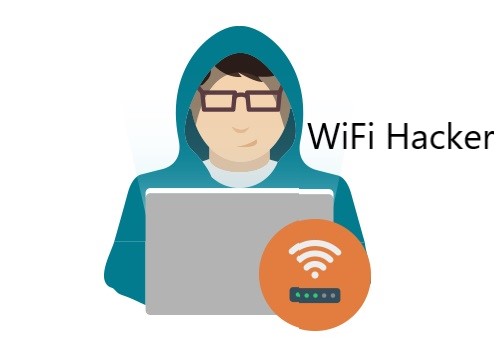The internet banking app helps you avoid wasting so much cash and overdrawing the bank account. But you’re not alone if you’re uncertain how safe it is.
Juniper Research estimates that just by 2021, more than 3 billion users worldwide will be dependent on smartphones. To potential criminals and experienced hackers, it’s a lot of targets. Now, the question is, how should you stay safe while shopping online from your smartphone?
The very first element you have to understand how exactly criminals and hackers are trying to get details about your finance. So you can protect yourself from threats more quickly.
There are three different ways through which criminals can access your data.
1. Phishing
Cybercriminals can reach you by text, mobile, or email and act as a trustworthy entity to obtain information about your account. They sometimes direct you to websites that look the same as banking websites or ask for details of your account.
2. Spying your Keystrokes
Malware will record everything you enter into your device like amounts, passwords, and account numbers. So, this Malware will forward all of your data to that attacker. Most of your identities and codes can be revealed to someone with evil intentions.
3. Middle Attacks
The banking app must interact with the credit union or bank to verify the identity of the entity. Cybercriminals can often position them as banks and try to send a fake bank database certification to the banking applications you use.
Awareness is the best protection against Hackers. The following are a few tips for secure mobile banking.
Watch for Fake Apps
False applications are a growing way to gain a client’s login passwords. It is better always to download and install the banking application from the official site of that bank. Such requests will be trustworthy and will not provide an easy way for scammers to access a bank account of a user.
On the other hand, applications installed from third-party platforms like the Play Store are not always legitimate and can be controlled by some scammers. So, if possible, consumers must always check reviews, suggestions, and security details before installing any application, whether it’s am the latest popular game or a banking application.
Secure the Access Methods
Mobile banking is very close to online banking, but phones introduce new security tools that can not be found on personal computers. The conventional way to log into internet banking involves pin numbers, customer numbers, passwords, and sometimes other criteria for identification. Trying to log in through mobile applications can sometimes require the same number and password procedure that a user needs to know. For instance, fingerprint authentication is very often available on devices, although many also allow for identification for using Apple’s Face ID. Some mobile banking applications on Apple devices also use voice-activated transactions.
Avoid insecure Wi-Fi
Most retail outlets offer free Wi-Fi, and they attract users to places such as school libraries, buses, and trains. Nevertheless, if consumers use these unsafe Wi-Fi services, they must not take the risk to search their mobile banking apps. Experienced scammers can capture sensitive information and payments that happen through unprotected networks, so choosing the risk isn’t the best option.
You should use a VPN (Virtual Private Network) while using public Wi-Fi, as it protects you from online hackers and data packet sniffers. RitaVPN is one of the best VPN services, and it secures your data and information by encrypting it and no one can steal your data online.
Shutting off the Bluetooth feature, particularly when testing banking applications, will protect individuals in the vicinity from every unauthorized wireless activity
Don’t Lose Your Phone.
Losing a mobile is just as tragic as losing part of you, and it becomes worst when someone who steals or finds your cell phone is using it to reach your account, you may lose a lot more. A secure password that is created from a random sequence of uppercase and lowercase letters, numbers, and symbols is by far the best method to lock your mobile. Its also better to use facial recognition, iris scanner, or fingerprints.
Don’t Follow Links
You should never follow any banking link which is received through email or text message. These links may direct you to something like a spoofed site when you reach the data on such a website, that you have already just passed it on to thieves. When you put your data on such a website, you have already just passed it on to online thieves. Navigating straight to a site is often a smart idea. You can type and save the Website address of your bank on your mobile.
Don’t Share Details over the Phone.
With the introduction of mobile banking, mobile scammers have not yet vanished-they’ve just discovered another way to manipulate. Callers will always seek to dupe the users by pretending to be Police or from the bank, and they may ask you to share some personal information.
No bank will request sensitive information on the mobile. Real callers will offer users the chance to call back to the specified numbers of the bank to verify that the call is legitimate and must be pursued. Such forms of online fraud may also occur via text messages or emails. Even if consumers are informed about such strategies, and they don’t share their data, it is still essential to let the banks know about account attempt.
Remote deposit capture
That’s not a new problem to investigate fraud. Also, in a financial institution, this is one of the most significant forms of online fraud. Remote deposits capturing enables consumers to take a picture and deposit a check on their smartphone. Although financial institutions have developed strict customer agreements and monitoring of this software, fraudsters have discovered system flaws. Remote deposits capturing enables consumers to take a picture and deposit a check on their smartphone. Although financial institutions have developed strict consumer agreements and control of this software, fraudsters also discovered process flaws.






